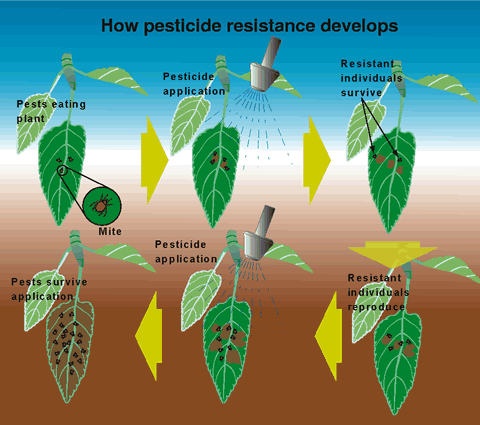More About Eco Bed Bug Exterminators Dc
Wiki Article
The 20-Second Trick For Eco Bed Bug Exterminators Dc
Table of ContentsThe Eco Bed Bug Exterminators Dc Statements8 Easy Facts About Eco Bed Bug Exterminators Dc ExplainedThe smart Trick of Eco Bed Bug Exterminators Dc That Nobody is Talking AboutThe 5-Second Trick For Eco Bed Bug Exterminators DcThe Main Principles Of Eco Bed Bug Exterminators Dc
Due to the fact that chemicals are hazardous, they are likewise possibly unsafe to people, pets, other organisms, and the environment. Individuals that make use of pesticides or consistently come in call with them need to understand the family member poisoning, possible health and wellness impacts, and preventative steps to reduce direct exposure to the items they use. Danger, or danger, of using pesticides is the capacity for injury, or the degree of threat associated with using a pesticide under a provided collection of conditions.
Nevertheless, applicators can decrease or nearly eliminate direct exposure-- and thus minimize hazard-- by adhering to the tag directions, using personal protective apparel and equipment (PPE), and managing the pesticide appropriately. As an example, greater than 95 percent of all pesticide exposures originate from facial exposure, primarily to the hands and forearms. By using a pair of unlined, chemical-resistant gloves, this sort of direct exposure can be nearly removed.
The hazardous effects that happen from a solitary direct exposure by any path of entrance are called "severe results." The 4 routes of direct exposure are dermal (skin), inhalation (lungs), dental (mouth), and the eyes. Acute poisoning is determined by analyzing the dermal poisoning, inhalation toxicity, and oral toxicity of guinea pig.
6 Simple Techniques For Eco Bed Bug Exterminators Dc
Severe toxicity is determined as the amount or focus of a toxicant-- the a.i.-- called for to kill half of the animals in an examination populace. This procedure is usually expressed as the LD50 (lethal dosage 50) or the LC50 (dangerous focus 50). In addition, the LD50 and LC50 values are based upon a solitary dosage and are videotaped in milligrams of pesticide per kg of body weight (mg/kg) of the test pet or partially per million (ppm).The reduced the LD50 or LC50 value of a pesticide item, the greater its toxicity to people and pets. Pesticides with a high LD50 are the least poisonous to human beings if utilized according to the instructions on the item label. The chronic poisoning of a pesticide is determined by subjecting guinea pig to long-term exposure to the active ingredient.
The persistent poisoning of a chemical is extra challenging than severe poisoning to identify with lab analysis. Products are categorized on the basis of their relative intense toxicity (their LD50 or LC50 worths). Pesticides that are identified as extremely harmful (Toxicity Group I) on the basis of either oral, facial, or inhalation poisoning must have the signal words threat and toxin published in red with a head and crossbones icon plainly presented on the front panel of the plan tag.
The severe (solitary dosage) dental LD50 for chemical items in this team ranges from a trace quantity to 50 mg/kg. As an example, direct exposure of a few drops of a product taken orally might be fatal to a 150-pound person. Some chemical items have just the signal word threat, which informs you absolutely nothing regarding the intense poisoning, simply that the product can create serious eye damage or extreme skin inflammation
See This Report on Eco Bed Bug Exterminators Dc
In this category, the severe oral LD50 ranges from 50 to 500 mg/kg. A tsp to an ounce of this material might be fatal to a 150-pound person (exterminator). Pesticide products classified as either somewhat toxic or relatively safe (Poisoning Classifications III and IV) are needed to have the signal word CAUTION on the pesticide tag
All pesticide poisoning worths, including visit this website the LD50, can be discovered on the product's Product Safety Information Sheet (MSDS) - exterminator. Chemical tags and MSDS can be gotten from sellers or manufactures. On top of that, a lot of items also have info that can be found online. The signs of chemical poisoning can vary from a moderate skin inflammation to coma or perhaps death.
Due to the fact that of possible health problems, chemical users and trainers need to identify the typical indications and symptoms of chemical poisoning. The effects, or signs, of chemical poisoning can be generally defined as either topical or systemic.
Excitement About Eco Bed Bug Exterminators Dc
Dermatitis, or inflammation of the skin, is approved as the most generally reported topical impact connected with chemical direct exposure. Some people often tend to cough, wheeze, or sneeze when revealed to pesticide sprays.
This symptom usually subsides within a few mins after a person is removed from the direct exposure to the toxic irritant. Nevertheless, a response to a pesticide product that triggers a person not just to sneeze and cough but also to create severe intense respiratory signs and symptoms is more probable to be a true hypersensitivity or allergy.
Systemic effects are rather different from topical impacts. They typically happen far from the initial point of call as a result of the pesticide being soaked up into and distributed throughout the body. Systemic impacts frequently include nausea, vomiting, exhaustion, headache, and digestive tract conditions. In advanced poisoning cases, the individual may experience adjustments in heart rate, problem breathing, convulsions, and coma, which could lead to fatality.
Report this wiki page